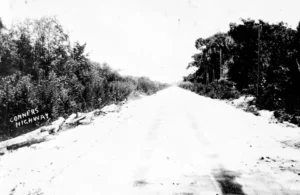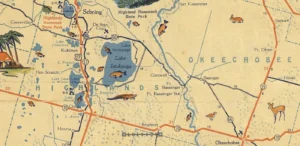
Okeechobee County
Okeechobee County, Florida, boasts a relatively young history compared to some of its neighbors. However, its story is no less fascinating, intertwined with the management of the vast Lake Okeechobee and the struggles and triumphs of its pioneering settlers.
Long before European arrival, the land around Lake Okeechobee was home to Seminole and Calusa tribes. The lake’s name itself reflects their heritage, with “Okeechobee” translating to “water” (okee) and “big” (chobee) in Seminole language. European settlers began arriving in the late 19th century, drawn by the potential for cattle ranching. Basinger and Fort Drum were the first settlements to emerge, but harsh living conditions and lack of infrastructure kept the population sparse.
The defining moment in Okeechobee County’s history came in 1928 with the catastrophic Lake Okeechobee hurricane. The storm caused a major breach in the dike surrounding the lake, leading to devastating floods that claimed thousands of lives. This tragedy spurred the construction of the Herbert Hoover Dike, a massive project that continues to play a crucial role in flood control today.
Following the hurricane, Okeechobee County officially incorporated in 1917. The town of Okeechobee itself began to flourish, becoming a center for agriculture and commerce. The development of the Okeechobee Waterway in the 1930s further boosted the county’s economy, allowing for transportation of goods and facilitating growth.
Today, Okeechobee County retains its strong agricultural roots, with cattle ranching and citrus production remaining significant industries. Tourism also plays a growing role, with visitors drawn to the beauty of Lake Okeechobee and the surrounding natural areas. As Okeechobee County continues to evolve, it carries the legacy of its pioneering spirit and a deep connection to the unique ecosystem of “Big Water.”


